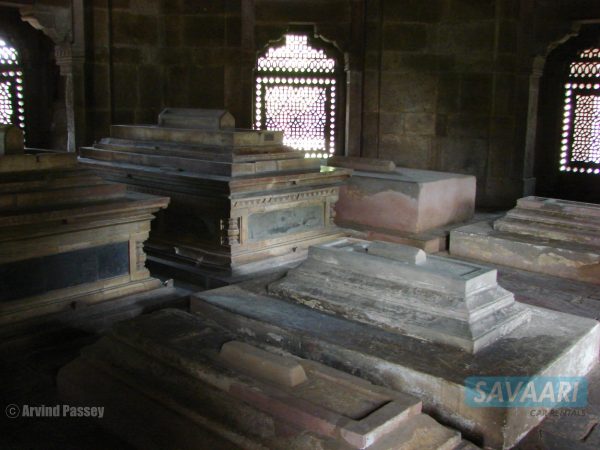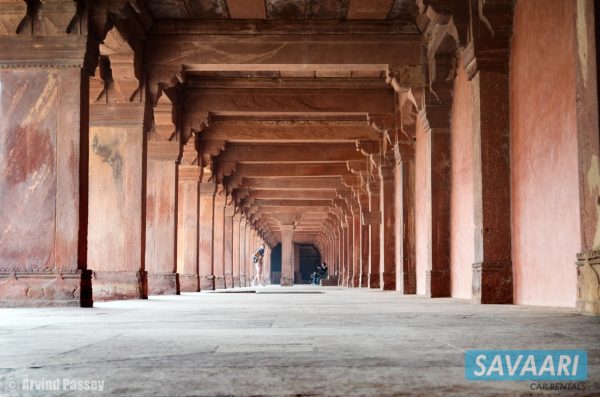The representation of the Mughal Era doesn’t revolve only around a road in Delhi named after Aurangzeb. Kebabs originating from the imperial kitchens of the Mughals, Persian that converged with Turkish and Arabic to transform into Urdu, art and painting styles, and architecture are just a few connections that still go on and converge with our sense of pride in our heritage. For tourists and those interested in understanding this Mughal heritage, the monuments spread from Delhi to Agra have enough stories to last a lifetime. Mughal emperors were patrons of the arts and Swapna Liddle says that in the domain of ‘building, artisanal crafts like weaving and metal-working, or fine arts like painting, they set standards of taste and perfection that became an example for others to follow, and brought India the global recognition for high quality handmade goods that it still enjoys.’
Thus the long line of Mughals from 1526 to 1858 not only brought sensitivities from their place of origin, that is, the present day Uzbekistan, but readily adopted inspirations that sprung in and around the area they were destined to rule. An article in Dailyo points out that the Mughals came as conquerors but remained as Indians not colonists ‘since Akbar onwards all were born in India with many having Rajput mothers and their “Indianness” was complete.’ This mix of Indian-ness with Persian and other influences have given us a treasure of massive arched gateways, bulbous domes, gigantic hall rooms, and minarets on one hand and mosques, mausoleums, and gardens on the other, all influenced by the Persian style of architecture with pools, fountains, and canals inside the gardens. These fascinating architectural gems can be observed at the Taj Mahal, Qutub Minar (not from the Mughal period), Jama Masjid, Red Fort, Itmad-ud-Daula, Humayun’s Tomb, Buland Darwaza, Agra Fort, and Fatehpur Sikri, to name just a few.
To force-feed every facet of Mughal influence in one short essay isn’t the right thing to do but this post will have enough details to make even a traveller-in-a-hurry initiate a lasting love for this part of India.
Let us first move out of Delhi and talk about the Taj Mahal. The first story that I heard about this monument was a bit gory. The story was about the hands of every artisan being cut to ensure that they never built anything like this ever. Well, a bit of research told me that almost the same team under Ustad Ahmed Lahauri worked on the Red Fort in Delhi as well as on other projects. So the Taj definitely doesn’t have the blood of its creators splattered all over it.
Khurram built the Taj in Arjumand’s memory. Arjumand and Khurram got married because Mehrunnisa gave her permission for this marriage. This is interesting because it tells me so much about the way destiny twists and turns to open the page that remains open for the future. Indu Sundaresan writes in her book ‘The Feast of Roses’: ‘But Mehrunnisa did not know then, would never know, by giving her blessings to this marriage she had set into progress a chain of events that would eventually erase her name from history’s pages. Or that Arjumand would become the only Mughal woman posterity would easily recognize. Docile, seemingly tractable and troublesome Arjumand would eclipse even Mehrunnisa, cast her in a shadow…because of the monument Khurram would build in Arjumand’s memory – the Taj Mahal.’
By the way, I’m sure many Indians too do not realise that even Hindu-centric places of pilgrimage like Benares have ‘riverfront ghats bear an uncanny resemblance to the Mughal fortress-palaces that line the Jamuna river in Agra and Delhi’, as Madhuri Desai tells us in her book ‘Benares Reconstructed’. A lot of us do not know that Akbar, the Mughal emperor was actually illiterate and could neither read nor write but still managed to create a treasure of lasting heritage for the future because he learned and remembered the conversations he had with poets, authors, musicians, and architects. Akbar was the emperor who encouraged the translation of the Ramayana and the Mahabharata to dispel ignorance and thus put an end to communal hatred.
It was not the Mughals alone who gave Delhi all that it has to show to those appreciating heritage. This city has its story etched in stone and forts, mosques, tombs, and gates mingle seamlessly with gardens and planned architectural sensitivity of Lutyen. Monuments in Delhi have preserved conversations from the early third century BC to the sixteenth century AD. This city has walked with creators from the Mahabharata age, hobnobbed with Mauryan artists and artisans, and then listened to the creative impulses Sultans, Rajpiuts, Pathans, and then the British. Delhi has seen more than what a lot of cities see during their life-cycle. However, the Mughals were the first to grant its façade the magnificence it deserves. No wonder then that William Dalrymple wrote in ‘The Last Mughal’: ‘Love within my being. You lived with me, breath of my breath, Being in my being, nor left my side; But now the wheel of Time has turned And you are gone – no joys abide.’
Mughal architecture and structures have a knack to be surrounded by stories. Even the Red Fort has quite a few and among the most popular is the one that tells us how even the white walls turned red. Of course, the walls were a mix of red and white but negligence and lack of maintenance made the white stone chip off and the British decided to give these sections a coat of red paint. Thus, the story goes, the Qila-e-Mubarak came to be known as Lal Qila or Red Fort.
It is also interesting to know that paradise in some or the other form is often woven in with Mughal architecture. For instance, the fountains in the imperial apartments are called ‘Stream of Paradise’ or ‘nahr-i-behisht’. Read through my lines on Humayun’s Tomb and you’ll soon enough be acquainted with yet another link to paradise. Humayun’s Tomb from the 15th century has more than a hundred graves and a lot of these are on the first level terrace called the Dormitory of the Mughals. This complex is the first garden-tomb in the sub-continent, has a double-domed elevation, and was designed by Mirak Mirza Ghiyath, a Persian architect. However, the last time I was here I noticed couples necking and smooching under every tree in the complex and inside every shaded concave structure… and I thought, ‘Is this why the tomb’s octagonal chambers are representative of the Islamic concept of Paradise?’
Well, Mughal heritage deserves to be protected as well as maintained properly because they earn a sizeable revenue for the country. The Ministry of Culture in Lok Sabha revealed that the Taj Mahal has a ticket turnover of 21 crore, the Red Fort and Humayun’s Tomb earn 6 crore each. With this kind of money involved, we must not really be raking out gory and unpalatable facets of the Mughal Period. Such facts would anyway be there even for non-Mughal rulers through the ages. What really matters is that the Mughals have given us so much to talk about and present to the world. I must also add here that completing the Mughal-circuit by road is a good option as minor monuments can be scattered all over and, if time permits, short detours can be rather useful… thus cab booking in advance works wonders.
.
.
.
.
.
.
Arvind Passey
05 June 2018

















6 comments
susmita kapoor says:
Jul 4, 2018
tajmahal is beautiful… mughal invested a lot of money in making these kind of monument ….
Arvind Passey says:
Jul 4, 2018
Thanks for visiting my blog, reading, and commenting, Susmita. Do visit again. 🙂
Kesari says:
Aug 16, 2018
Thank you so much for sharing a great information. I appreciate your time and effort in your work. Keep posting.
Arvind Passey says:
Aug 24, 2018
Thanks for your kind words. Do visit my blog again.
Malik Khan says:
Aug 24, 2020
Awesome post.
Arvind Passey says:
Sep 3, 2020
Thank you